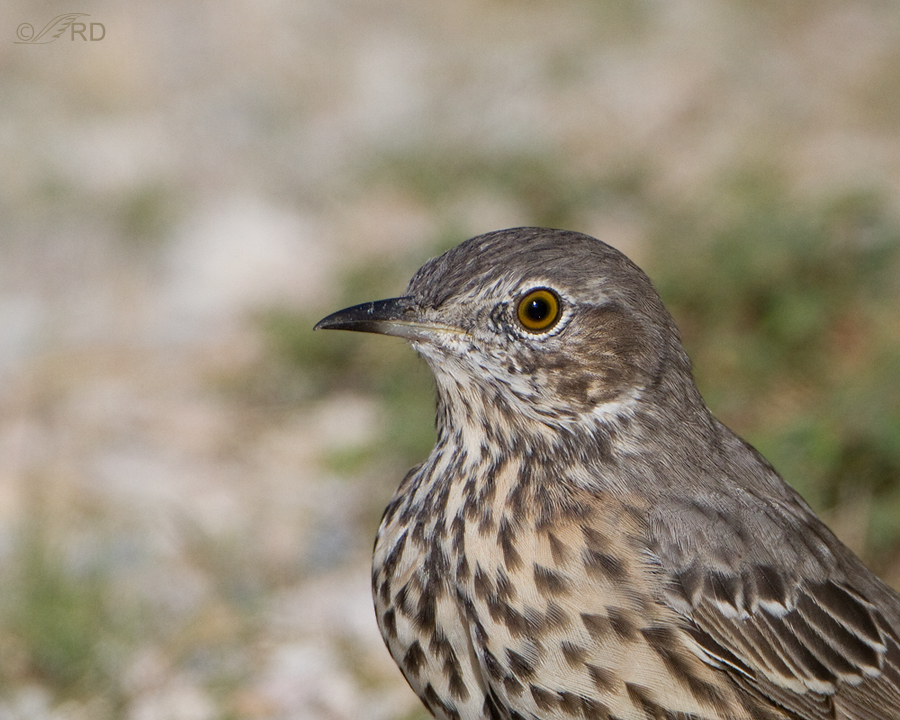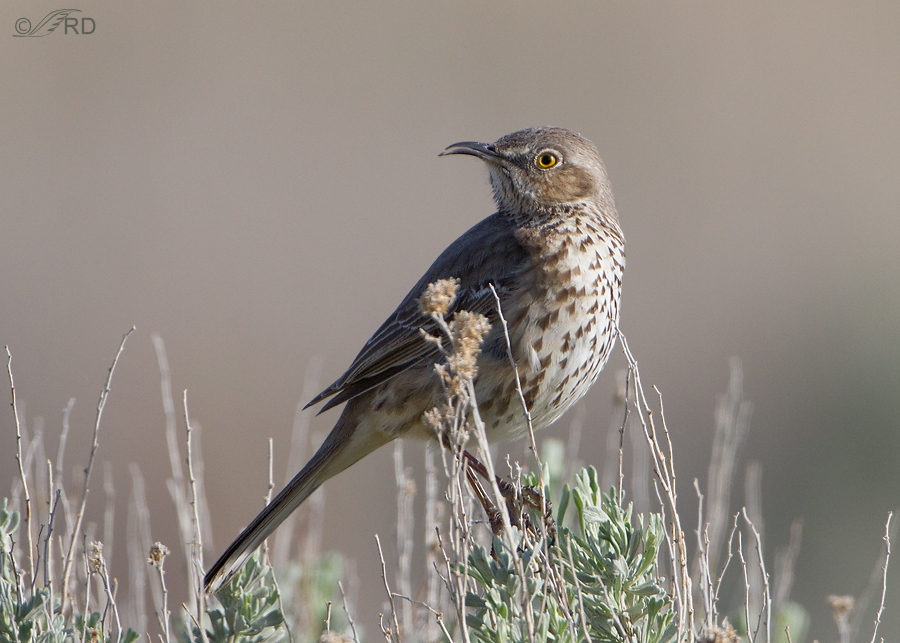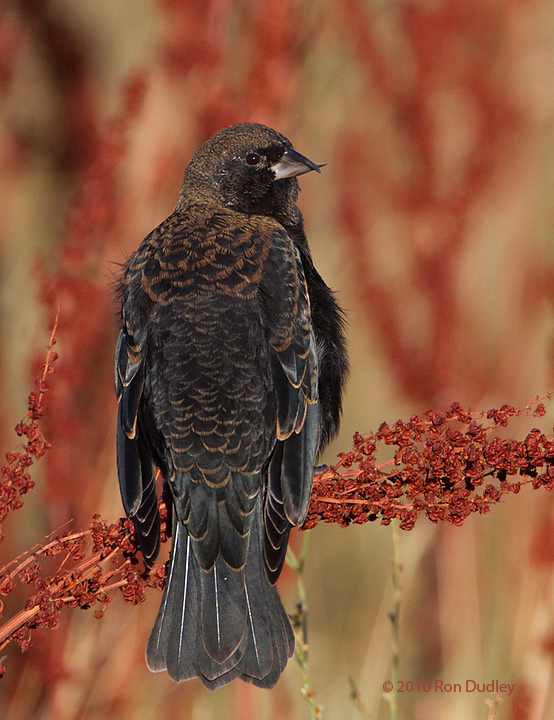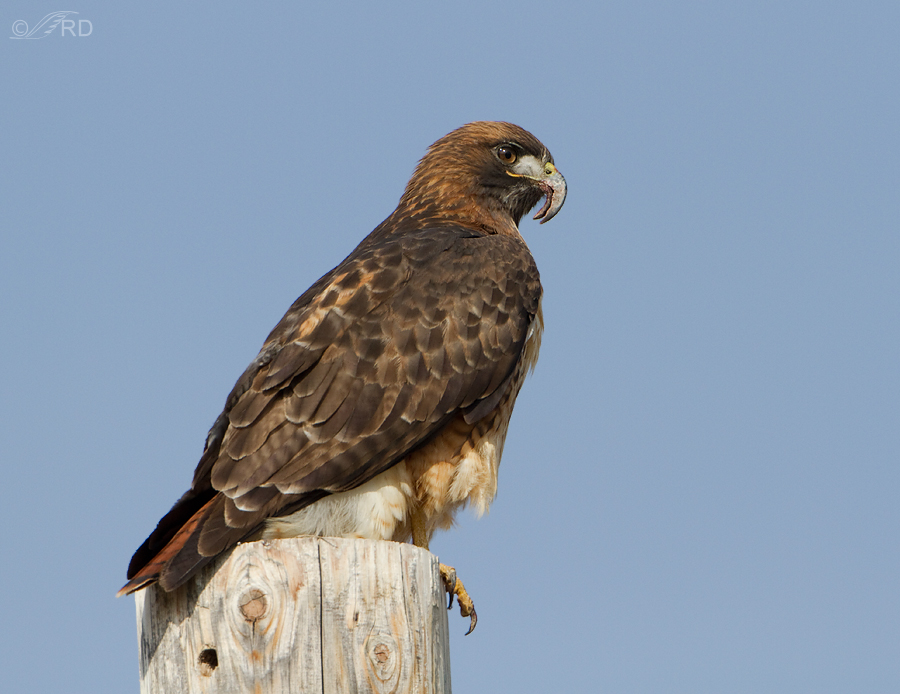I’m seeing more bill deformities “out there” than I used to and that disturbs me. The latest example was a Sage Thrasher we found on Antelope Island four days ago.
This is what a normal bill on a Sage Thrasher looks like. Notice that the upper mandible is slightly longer than the lower one with a curved tip at the terminus and that both mandibles fit together tightly showing no evidence of a gap between them.
But in this thrasher the upper mandible is significantly shorter than the lower and the curve of the two mandibles doesn’t match so they don’t fit together well, leaving a gap. This is definitely not a temporary, voluntary position of the bill as I have about a dozen shots of the bird over a period of about a minute that show the same thing. The two mandibles never fit together cleanly and the upper one is definitely shorter.
With this head turn you can see the other side. I can only imagine how this would interfere with normal preening as the bird attempts to draw the individual feathers through the bill to lock the barbs together.
An extreme crop of the previous image. Notice how the back of the mandibles touch each other and prevent the rest of the bill from coming together because their curves don’t match along the entire length of the bill. At first I thought that the end of the lower mandible looked damaged or eroded but perhaps there’s just something on the bill that is exactly the same color as the background…
Another example of a bill deformity – this time in a Red-winged Blackbird. Notice the crossed mandibles which is definitely not normal.
And some of you may recall this Red-tailed Hawk we found last fall in the west desert. This bird apparently had “long-billed syndrome” – more about the condition here. And here. We contacted several bird conservation and research groups about the possibility of trapping this bird to see if anything could be done for it but in the end the consensus was to not make such an attempt. This hawk was still actively feeding (we watched it catch and eat several voles) and it hung around the general vicinity for several weeks before it apparently moved on.
I find this apparent increase in bill deformities disturbing, as do some of the experts we were in contact with about the hawk. The cause(s) is unknown.
Ron








As a Falconer who has trained many hawks in my life, and have helped in rehabilitating. And have also studied them for 15 years, I have had occasions of coming across overgrown beaks in raptors.
Most reasons why beaks grow too much is a very high nutrient rich diet. And sometimes we have to trim the beaks down in order to keep it normal. This particular Redtailed hawk very well could have had a too rich diet. But there are also other reasons such as genetic deformities that occur at hatching and while growing up to fledge. I’ve even heard of some raptors that had their beaks broken or cracked. This might cause the beak to heal and regrow incorrectly. As with our fingernails and hair, Beaks of birds are made of keratin. Which is always growing. They are black in beaks and talons due to a pigment called Melanin that strengthens them. Even their feathers are made of keratin.
As for an environmental contaminant. Not likely based on my experiences. But I am not excluding that possibility. My strongest opinion is a genetic factor.
I’m actually glad you have gotten pictures of these deformities. One day, I hope they can be presented to show what is happening to our raptors.
I’d like to meet you sometime if possible. Compare notes, talk wildlife, share stories, etc..
I live in Taylorsville and find myself in Farmington quite often lately.(can’t resist the terns no matter how frustrating it is to photograph them.)
email me please.
Thank you for your input Matt. I hope they get the cause(s) of this malady figured out so they can address the issue in some way.
I’ll be contacting you, as per your request.
Worrying. I suspect that our activities may have a part to play. I would like to be proved wrong though.
I worry too Elephant’s Child.
As a biologist, do you have any theories? Pesticides? Pollutants?
Tana, I’d hate to speculate but I wouldn’t bet against some form of enviorenmental contaminant.
A very interesting and informative post, Ron. Great photos, too.
Thank you Bob.